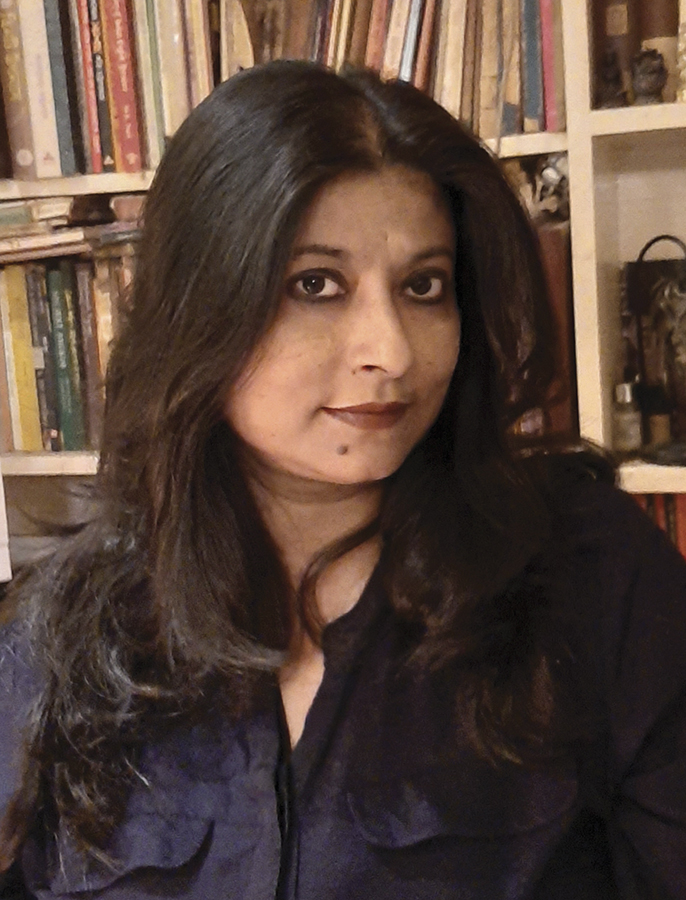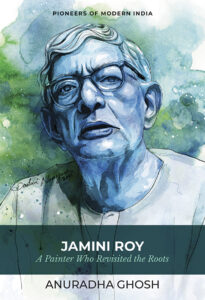Interview- Author Anuradha Ghosh On Jamini Roy: A Painter Who Revisited the Roots


Anuradha Ghosh is employed as an Associate Professor in English at Dinabandhu Andrews College, Kolkata. She started her career as a journalist in Business Standard and then in Ananda Bazar Patrika, before moving to her present position in 1996. She has spoken and written extensively on art and aesthetics, and cultural studies. Her previous book, The Afterlife of Silence: Still Lifes of Jogen Chowdhury, has also been published by Niyogi Books in 2020.
Her latest book Jamini Roy: A Painter Who Revisited the Roots is on eminent painter Jamini Roy. The Kolkata Mail’s correspondent Priyanka Dutta caught up with the author in an exclusive chat over her new book. Excerpts..
After the book on Jogen Chowdhury, your latest book is on Jamini Roy. Are you more interested in writing on art and aesthetics?
Anuradha Ghosh- Yes, you could say I have always leaned towards writing on art. Apart from the two books you have mentioned, I have also written a book on Hemen Mazumdar, a monograph on Samindranath Majumdar, and have co-authored a book on the collages of Nandalal Bose. I also write poetry, and have two volumes of my own poems (one of them co-authored) in Bangla, apart from a book of poems that I had translated into English.
I have always felt that there is a deep and ingrained connection between painting and poetry- one enriches the understanding of another- as both are based on patterns of imagination. But yes, I do enjoy writing on art and have a few projects lined up for the recent future.
How much time did it take to research and write this book?
Anuradha Ghosh- When I took on the project of writing this particular book, Bengal was under a strict lockdown, and I was alone at home for a certain time. So I could devote all my time to writing, which would not have happened in normal times- I would then need to go to work and take care of numerous outside duties. With the help of many friends and well-wishers who sent me scanned copies of valuable documents and even entire books- and also with the reference work with books from my father’s sizeable library- I could finish the entire project in about six months.
What aspects of the painter’s life have you showcased in this book?
Anuradha Ghosh- Jamini Roy’s work is inseparable from his life- both the factors of simplicity and simplification are common factors of his life and work. I have tried to explore in detail this important connection. I have also tried to show how his art connected to folk art not only in points of style, but also in the manner of execution, and that is why after a certain time his whole family participated in the process of art, as a folk painter’s family would.
I have also stressed the factor of his being able to bring art to the
Bengali middle-class household by keeping his paintings affordable, thus in a way echoing the spirit of folk art which everyone could afford because of their low price. I have an entire chapter in the book- named The People’s Artist- in which I have discussed in detail how he did away with the colonially-derived hierarchy between artist and spectator/collector, and also how the communists, who also believed in bringing art to the masses, hailed him as one of their own. I have also tried to bring to the reader the meditative self of the painter and the ways in which he connected to his art.
As a writer, you must have experienced writer’s block. How do you deal with it?
Anuradha Ghosh- At times, when I face such blocks while writing nonfiction, I simply shift to writing poetry for a time. This usually does the trick- it clears my head and recharges those analytical batteries. In those rare times when this does not work, I resort to reading my favorite books- usually Ian McEwan’s novels, or Bibhutibhushan Bandyopadhyay’s travelogues- and after a week or so, I’m usually good to go. I’ve also tried to go on a trip to the hills with my son during such times, and saw firsthand how a week away from the city rejuvenates both the mind and the pen!
How much important is it for today’s generation to know about such pioneers of modern India?
Anuradha Ghosh- I cannot over-emphasize the importance of this. It is absolutely essential that the young generation knows about them. Being familiar with only the political history of the nation does not communicate the actual ‘feel’ of the nation in its making: the contribution of all the people that these monographs address has formed the very bedrock on which India stands now. Unless the present generation knows about their aspirations, their toil, and even their pitfalls, and frustrations, they will never come to know the real countenance of India.
And then there is this very real thread of inspiration that runs through these books- to play a substantial role in the making of one’s own country- which, I believe, is essential for the youth of India.
What kind of books do you like to read?
Anuradha Ghosh- Apart from books on art, I love reading poetry. I am also attracted to children’s books that make use of audacious leaps of imagination.
What are you planning to write next?
Anuradha Ghosh- I am thinking of writing a shorter book on Hemen Mazumdar’s paintings of women. I also have a dream project of writing on Bengal landscape painting- spanning about a hundred years- which I plan to take up as soon as I receive adequate funding for the project.
What will be your advice to aspiring young authors?
Anuradha Ghosh- To write, you need to read first and read voraciously. Spending time on structuring one’s work is of prime importance- otherwise, it becomes shapeless and uninteresting. For writing nonfiction, I have seen
First-hand how a clear grasp of history and contemporary literary theory really helps- so these should be on the reading list of any aspiring nonfiction writer. And there is no alternative to hard work. Even if you take it at your own pace, you must connect every day with your work- write at least a paragraph if you are too busy on certain days. It is this regular connection that really works. Once you are beyond that initial 15-thousand-word mark, it gets comparatively easier.
One also needs to revise the manuscript thoroughly, many times if possible. And the choice of the publisher is important as well. Choose one with vision, and a sense of mission as well, so that your work gets the dignity and publicity it deserves- these are the factors that were behind the success of my own books.
